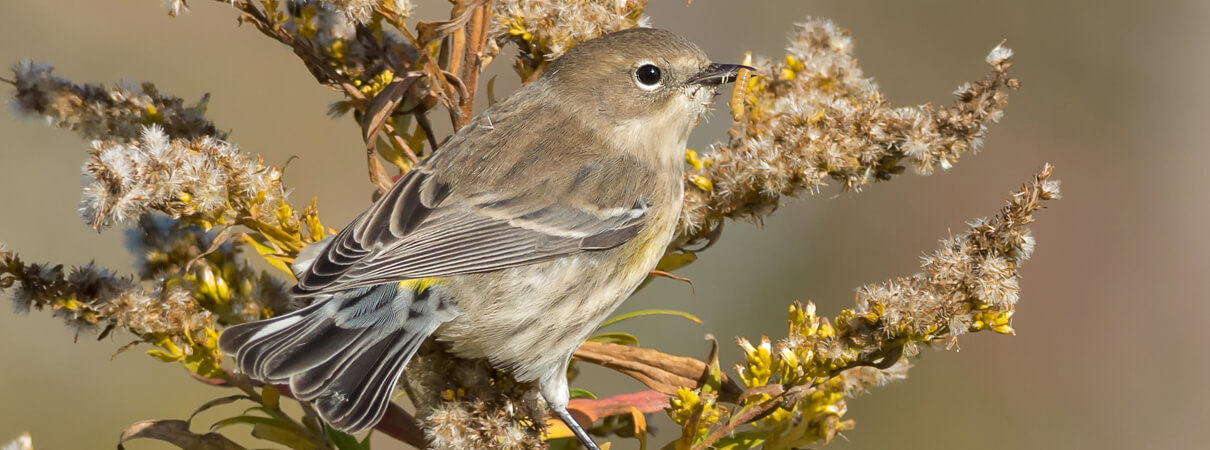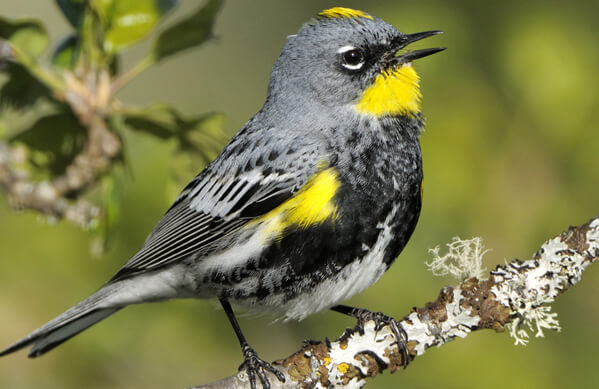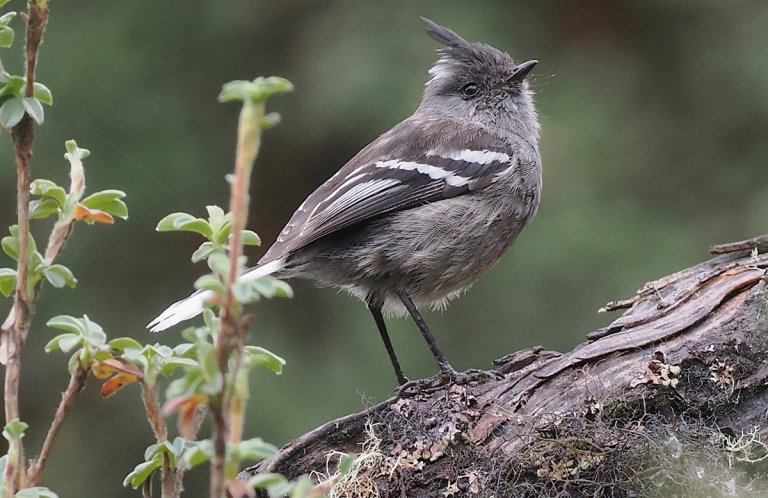
Yellow-rumped Warbler range map, Birds of North America, https://birdsna.org maintained by the Cornell Lab of Ornithology
The Yellow-rumped Warbler is one of the most widespread and well-known warblers in North America. Birders affectionately refer to this species as "butter-butt," since its bright yellow rump is an eye-catching and diagnostic field mark throughout the year. Adults also have a yellow crown patch, most obvious in adult males. This bird's species name, coronata, means crowned.
Warbler of Many Forms
North America is home to two migratory Yellow-rumped Warbler groups that are sometimes considered separate species: the "Myrtle" Warbler of eastern and far-northwestern North America and the "Audubon's" Warbler of the West. The two groups hybridize where their ranges meet in southwestern Canada, and were combined into a single species in 1973, named the Yellow-rumped Warbler.
These two groups are further divided into five subspecies. Two of these subspecies, associated with the "Audubon's" group, are found further south. These are the distinctive and nonmigratory "Black-fronted" Warbler of northwestern Mexico and the "Goldman's" Warbler of Guatemala.
The most recent genetic data suggests that the Myrtle, Audubon's, Goldman's, and possibly Black-fronted forms may actually be separate species. A formal split of the Yellow-rumped Warbler, which requires a decision by the North American Classification and Nomenclature Committee of the American Ornithological Society, may be forthcoming.
Winter Visitors
North American populations of the Yellow-rumped Warbler are short- to medium-distance migrants, only moving as far south as the central United States, south to the Caribbean and sparingly to central Panama. In fall, the Yellow-rumped usually migrates later than other warblers, appearing on wintering grounds around the same time as other winter residents such as the White-throated Sparrow, Golden-crowned Kinglet, and Brown Creeper.
The Yellow-rumped Warbler's song is a slow, loose, sweet "tuwee-tuwee-tuwee-tuwee,” usually rising or falling at the end. Calls include a rather metallic “check” or “chep.”
Listen to both the Yellow-rumped Warbler's song and call (both vocalizations are from the Yellow-rumped Warbler's "Myrtle" form):
(Audio of Yellow-rumped Warbler song by Frank Lambert, XC353483, accessible at www.xeno-canto.org/353483; Audio of Yellow-rumped Warbler call by Martin St-Michel, XC467698, accessible at www.xeno-canto.org/467698.)
Flexible Feeder
During its breeding season, the Yellow-rumped Warbler is mainly insectivorous. It gleans caterpillars, larvae, spiders, and other invertebrates from leaves, or zips out from perches like a flycatcher to nab aerial insects such as craneflies and gnats. Like Blackpoll and Cape May Warblers, Yellow-rumped Warblers feed heavily on spruce budworm during outbreaks.
When insect food is scarce, the Yellow-rumped Warbler switches to fruit, including wax myrtle berries, which gave the bird one of its former names. Its ability to digest the waxy coating of berries allows the Yellow-rumped Warbler to winter farther north than other warbler species. They sometimes visit backyard feeders for seed, suet, and fruit.
Conifer Warbler
Yellow-rumped Warblers are birds of coniferous and mixed forests; an estimated 63 percent of their population breeds in Canada's boreal forest. Other populations are found in similar, but higher-altitude, woodlands.

Yellow-rumped Warbler in winter plumage by Paul Reeves Photography Shutterstock
Yellow-rumped Warblers pair up at the beginning of each breeding season. The female builds a cup-shaped nest of twigs, pine needles, and grasses lined with fur and mosses on a horizontal conifer branch. Feathers may be woven into the nest to curve up and over the eggs, and may provide protection from sun or insulation from cold. In ideal conditions, a pair will raise two broods in a season.
A Common Bird Facing Common Threats
The Yellow-rumped Warbler is still common and widespread throughout its range, and its numbers are increasing. However, it contends with the same threats facing less common birds, particularly collisions with towers, glass, and other human-made structures. A 2013 study showed that, in the regions tracked, Yellow-rumped Warblers were among the top 10 species killed at communication towers.
ABC provides a number of online resources that provide information on how to help reduce communication tower collisions and fatalities. We also provide solutions to prevent bird collisions with glass, particularly at home windows.
Donate now to help reverse widespread bird population declines!



















































